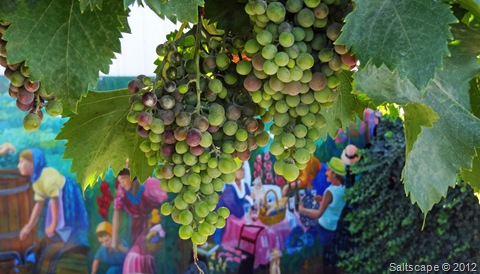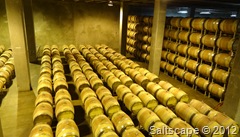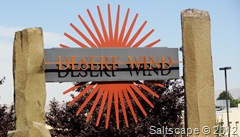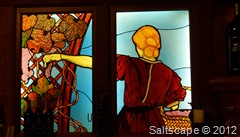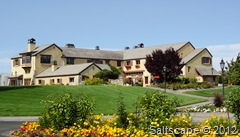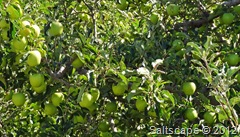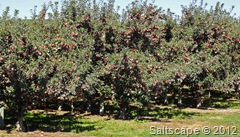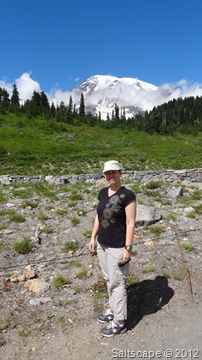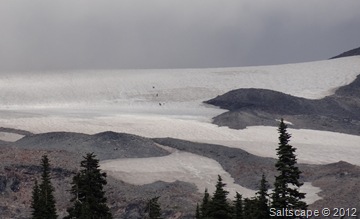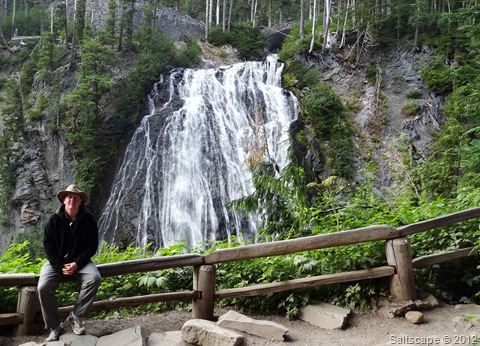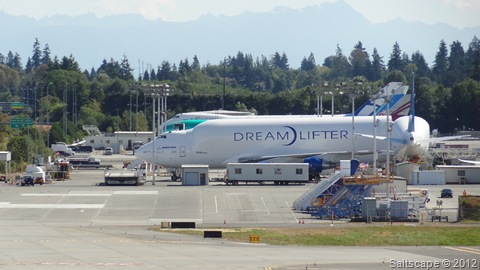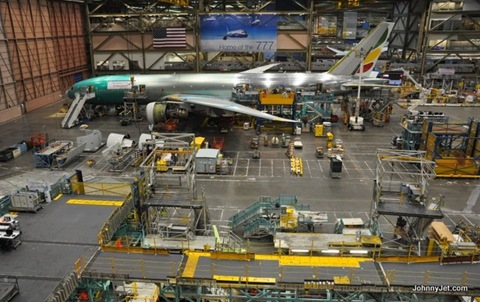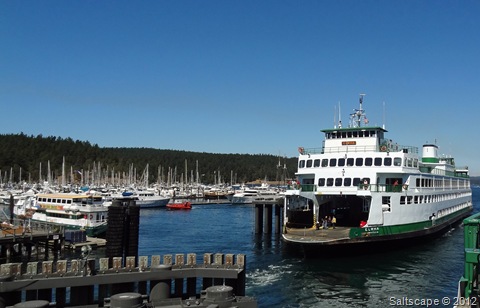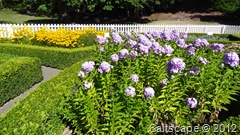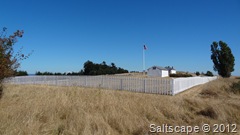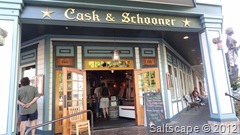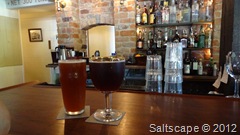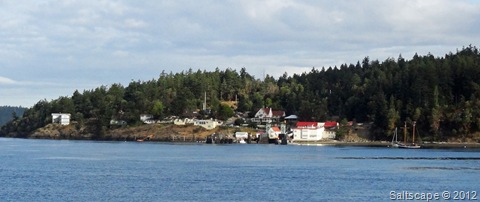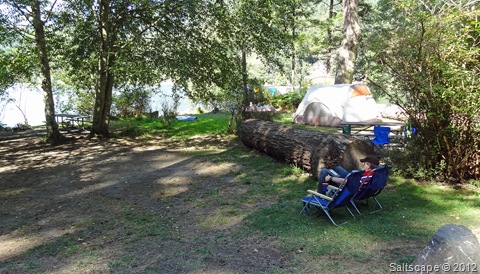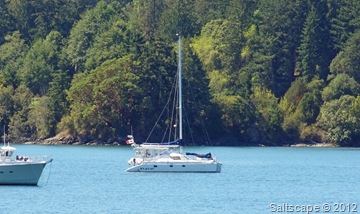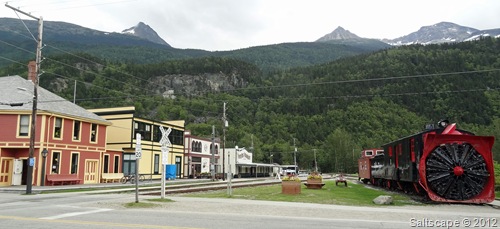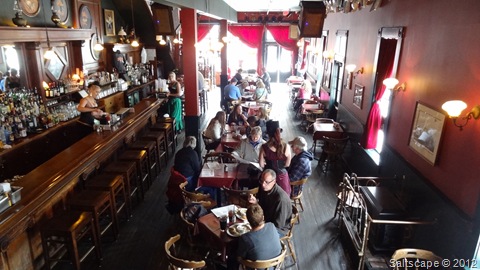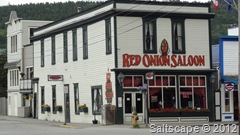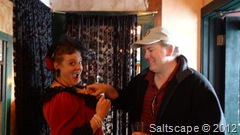Each Friday, I post some relevant (and not-so-relevant) stats about the trip, as well as a little write-up of what it’s like to live out of a van for weeks on end. Here’s where we are overall:
- Total miles driven: 11,391
- Total miles by ferry: 537
- Total days on the road: 109
- Total nights in a hotel: 4
- Total miles hiked: 110.44
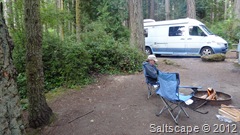
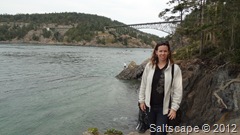
Camping at Deception Pass State Park on Whidbey Island
Some interesting stats for this week:
- Fuel stops: 2 (diesel: $4.10/gal in Puyallup, WA; $3.95/gal in Grandview, WA). We are averaging 22.6 miles per gallon, not too bad!
- NPS Sites Visited: 2 (San Juan Island Historical Park and Mt. Rainier NP)

Great campsite in old-growth forest at Mount Rainier National Park
We’ve had a couple of people send in questions about day-to-day life in the van, so I thought I’d answer those today.
Q: How do you do laundry? Do most of the campgrounds have laundry facilities?
A: We haven’t had too much difficulty with this aspect. Most RV parks have a few coin-op washers and dryers. And there are always Laundromats – most small towns seem to have one, and we’ve used them a couple of times. Some places are cheaper than others, of course, but usually it is anywhere from $2 to $4 to wash and dry, per load. We try to keep a good supply of quarters on hand.
One complaint about the van is that there’s not really a good space to put a clothes hamper. So we have a mesh bag that we keep on the floor in the bathroom. It’s not too bad at first, but as the pile of dirty laundry grows we sometimes have to shuffle the bag around when it gets in the way.
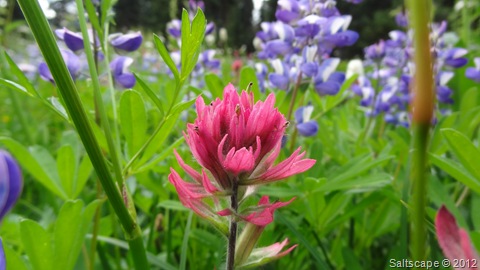
Q: A question about your shower in the Sprinter - do you use it, or have you been using campground showers?
A: We have yet to use the inside shower in our Sprinter, although I have used one in a Roadtrek we rented before we bought our van. The bathroom is pretty small as it is, once you pull the shower curtain around you don’t have a lot of room in there. Other drawbacks are: the handheld shower nozzle makes it more difficult than it needs to be, the water tankage isn’t really sufficient to take a lot of showers “off the hook” (not a problem if you are at a campground with full hookups though), and probably the most important drawback to me is that the bathroom floor (and sometimes the walls if you’re not careful) ends up all wet.
Kevin did use the outside shower once (with swimtrunks on) and it worked well, but used more water than we thought it would. Not a big deal if you have a water hookup available, but the fresh water tank only holds 25 gallons so if you are boondocking for an extended period of time you’d want to watch how much you use.
But I think for a short trip of boondocking in a national park or something like that, two people could probably use the shower once or twice with not too much fuss. We probably would use it if we were just on a three- or four-day “camping” trip. But for day-in, day-out use on a long road trip like we are on I think it would get old to have to heat the water each day, then dry out the bathroom when you are done. Much easier to just use the shower facilities at the RV park.
The shower facilities at RV parks run the gamut – some are incredibly nice (private bath/toilet/sink) while others are more college dorm-style (several small private changing alcoves and shower stalls in a large room). Cleanliness runs the gamut as well (always wear shower shoes, obviously), but so far we’ve only come across one place where we took a pass.
One item that I am glad we picked up before we left on the trip are our quick-dry Sea to Summit towels. There’s not a lot of towel rack space in the van to fully dry out the nice fluffy bath towels that we usually use at home. The quick dry towels are great, although they take some getting used to (think car shammy cloths).
